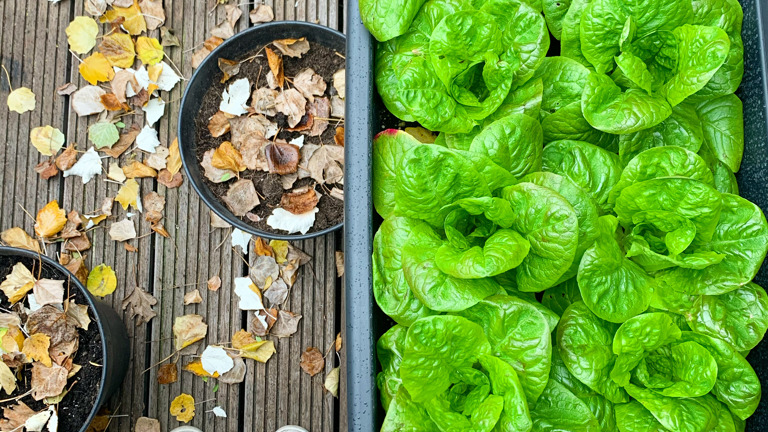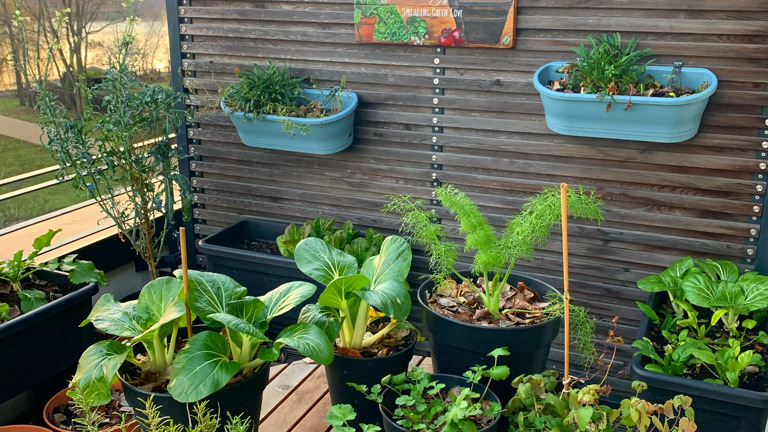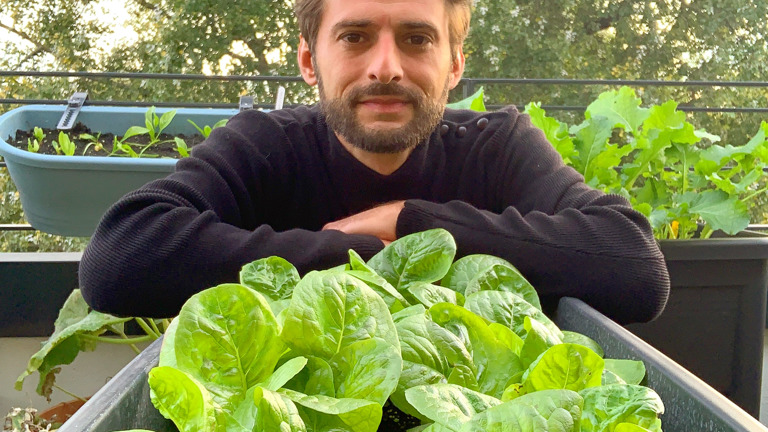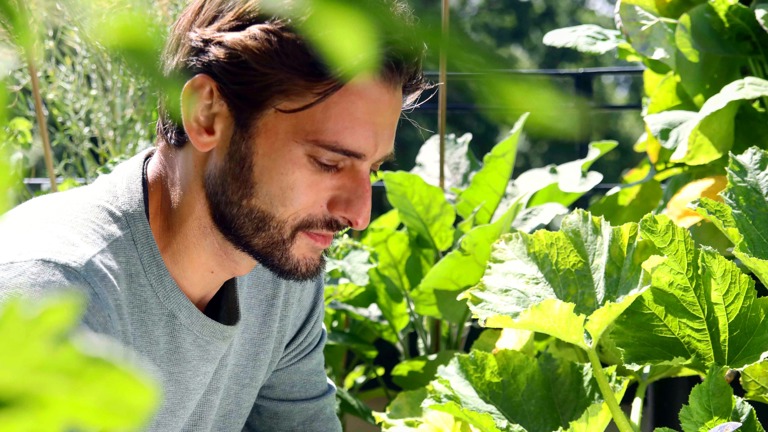
The Frenchie Gardener: How to grow your own on smaller surfaces
I often hear people around me saying “No, gardening is not for me” or “All my plants are dying, I don’t have a green thumb”. What if I would tell you that I was thinking exactly the same? I was visiting a gardening center to get some flowers for my balcony, like most people do in spring time. At the entrance of the shop, I saw this huge shelf full of radishes, lettuce, tomato and eggplant seeds. I stopped and looked at it for a while. “I would love to grow these, but come on Patrick, you know how this will end right?” But I had this shopping impulse buying act (probably the best one I ever had!) and I got myself some seeds, pots, soil and went back home. I was already thinking about failure, because I had some bad gardening experiences in the past. I managed to kill my aunt’s cactus in only three weeks, many of my indoor plants did not make it for long and I also remembered this basil plant from the grocery store which surely died after a few days. But I was watering it? I even tried to repot it in one of my window planters outside and here the basil plant died again.
Why your past growing attempts failed
Let’s put aside these traumatic experiences. I will explain why in the following lines. Let’s take the example of basil. Firstly, Basil is an annual plant: It lives and dies in the same year, simply because of it’s natural cycle. It has nothing to do with your gardening skills. Secondly, the potted basil from your grocery store is not designed to grow further, it’s simply made to be eaten. Thirdly, yes you probably tried to repot it outside in the soil of your window planter, not knowing that new soil contains in average only six weeks of nutrients, after this time your soil needs to be fertilized. And believe me, the few late night party wine glasses or cigarettes which ended in there, thanks to your tipsy friend, did not fertilize your soil.
In our modern society, we have given away the responsibility of growing food to the food industry with the purpose to feed ourselves. We abandoned this right, simply because we did not have any grow your own class at school, whereas this should be part of the most basic education, don’t you think? The great news is that it’s never too late! I did wait 36 years to start planting my first seed and in just a few months I could acquire all the sufficient knowledge. We all have a green thumb, we just have to put it into practice and learn very accessible and basic gardening knowledge.

Why we should all start growing our own food
Urban gardening has become a true passion that I love to share and grow as it may bring you amazing benefits in your daily life that you won’t regret:
- Knowing where your food comes from. Indeed, your organic lettuce or radishes will directly come from your own balcony or garden. No need for hundreds kilometers of transportation, just some small steps.
- Rediscovering the true taste of veggies, herbs and fruits. Forget about the flat taste of the tomatoes from the supermarket. By growing your own food, you’ll have the opportunity to grow organically and explore ancient heirloom varieties, all unique in terms of textures, flavors and nuances. Take for example tomatoes: there are 12.000 varieties around the world. Embrace our biodiversity!
- Green up your life. The colour green has a huge impact on our brain. The sight of green provides us with a feeling of well-being, serenity and concentration. Creating your own green jungle will give you these necessary feelings. Also, gardening is an amazing way to reconnect with nature, to relieve from stress and to have your own meditation moment.
- Discovering how our veggies, herbs and fruits are actually growing. Before starting gardening, I didn’t even know that most of our fruits are actually being born from a flower! I also didn’t know how a zucchini or cucumber was growing. Gardening will give you this opportunity to learn and discover the wonders of nature. You just need to respect, observe and adapt to her flow.
- Reconnecting with seasons. Gardening will truly awaken your consciousness about seasons. We are unfortunately used to having all kinds of varieties at any time in our grocery stores, but lets acknowledge that this is not normal and natural. All varieties have their seasons and by gardening, you’ll not only discover these cycles but you’ll also eat more varied. Let’s forget about tomatoes in winter, let’s explore turnips, spinach, lamb’s lettuce and kale. Gardening is a great opportunity to eat seasonal and more diverse food.
- A rewarding experience. Growing your own food is a wonderful adventure, ending with tasty and organic harvests. What a pride to harvest an organic lettuce from your own balcony and garden to share with your loved ones, right?
These few points are non-exhaustive and you will surely add many others during your gardening journey. Believe me, it will come! Now that you’re aware of all these benefits, I bet that you can’t wait to start growing. There is a lot of different information available on urban gardening, but it’s sometimes hard to now where and how to start. I’ll now share some helpful tips to get you started in the best way as possible. I will teach you more about how to optimize your space but also more about the right pot sizes or growing tables for more variety.
Analyzing your space
Having a full south and sunny balcony or garden is indeed ideal. With this sun exposition, you’ll be able to grow many different varieties such as tomatoes, eggplants, zucchinis, cucumbers and peppers. But if your balcony (or small garden) doesn’t have much sun, there is still hope! The good news is that certain varieties are thriving much better in half shade or shade exposition. This is for example the case of lettuce, radishes, kale or carrots, which prefer these shady spots during summer. Simply map your space, this will allow you to determine the future spots for sunny crops and for the ones who prefer more shade.
FULL SUN (MINIMUM OF 6 HOURS OF SUN): Veggies, fruits and herbs such as tomatoes, eggplants, cucumbers, peppers, basil, coriander, thyme, dill, fennel or sage.
HALF SUN/HALF SHADE (3 TO 6 HOURS OF SUN): Veggies, fruits and herbs such as cherry tomatoes, lettuce, radishes, kale, carrots, peas, spinach, potatoes, chives, coriander, parsley, rosemary and mint.
Optimizing your space
A 4m2 balcony or garden can be turned into a very efficient space on which you can grow a lot of different varieties. We all have limited floor space, but have a look at your vertical space as well. By vertical space, I mean the height of your balcony or garden. You might have balcony railings on which you can place two or three planters. You also might have a wall, just imagine the number of pots you could place on it. You might also have a ceiling? Great! You can simply attach some haning pots. Using vertical space will give you so many extra options!

Combining several types of pots and containers
Every product has its own specificities so you can optimize your space perfectly. To grow lots of different varieties, I combine three types of elho containers: the growtable xxl, different sizes of growpots and windowplanters. Growing tables are my best partner in veggie crime: They contain a great amount of soil, they free space on the floor to put some other pots and they also come with plastic covers (growhouses) which protest your plants from cold weather and pests. I use them to grow all my lettuce, radishes, kale, turnips, spinach and bok choy.
Regular growing pots such as the ones from the elho grow your own collection are ideal to grow plants such as tomatoes, zucchinis, cucumbers and peppers. But one key advise, give room to nature, only put one plant per pot so they have enough space to develop healthy. It’s better to have one healthy plant versus two who won’t give you healthy harvests.
Planters such as the corsica balcony planter are great to optimize your vertical space. You can use them to grow many different kitchen herbs, but also lettuce or radishes. Indeed, they are also great for flowers which will help to attract our beloved pollinators.
Sizes matters.. At least in gardening!
The volume of soil is highly linked to the variety you can grow in it. Here are different types of pots and volumes combined with different types of food to grow in there:
- The growtable xxl has a capacity of 50 liter. You can use this elho product to successfully grow 10 lettuce, 3 bunch of radishes, 4 kale and 8 turnips.
- The elho growpot (diameter 40 cm) has a capacity of 19 liter and is ideal for growing zucchinis, eggplants, cucumbers or high caliber tomatoes.
- The elho growpot (diameter 30 cm) has a capacity of 12 liter and is perfectly adapted for growing cherry tomatoes or medium caliber tomatoes. You can also take a look at the elho tomato pot which not only has the perfect capacity for growing tomatoes, but also comes with an water reservoir and rack to guide your plant during its growth.
- The elho growpot (diameter 27 cm) has a capacity of 8,7 liter and is optimal for growing strawberries or raspberries, but also suitable for two bok choy or two lettuce.
- The elho growpot (diameter 24 cm) has a capacity of 6,5 liter and is perfect for growing kitchen herbs such as dill, chives, basil, parsley, coriander or rosemary.

The importance of having great soil
Forget about cheap universal potting soil, but go for an organic potting soil designed for growing vegetables. The quality of the soil is crucial to grow healthy vegetables, so do not undermine this choice! You can start your first year of gardening by getting yourself an organic fertilized and prepared potting soil. In your second year, it is really worth to try out and make your own potting mix with different manures and substrates.
Home composting
Composting at home is easy and it will make you discover the perfect and balanced food cycle. Everything is connected: There is no waste, just a smarter use of it. The vegetables that we eat are nourishing and give us necessary nutrients, vitamins, minerals and calories. There are however parts which we don’t eat, such as orange peelings, an apple core or foliage from radishes. These organic food scraps should definitely not be thrown to the trash, because they can be the base of a great organic and homemade fertilizer, also known as compost.
With a bokashi box, compost becomes extremely easy and space efficient for small balconies or terraces. In the box, you can place all your organic food scraps. It will decompose in the box with the help of an organic spray or powder, designed to speed up the decomposition process. Every week, you’ll obtain a rich compost juice with is a great fertilizer for your plants. My advice is to mix 1 liter of compost juice in 10 liter of water. Every month and a half, you can open your box and take the lower decomposed layers to bury directly in your soil. It will give healthy organic nutrients to your soil to enhance its richness!
I sincerely hope that these tips will set you up for a growing success. To be very transparent, I wish I had read this article before I started urban gardening. It would have saved me a lot of time, so I hope this will be extremely useful for you!
I wish you a happy growing & and amazing gardening journey!
Green love,
The Frenchie Gardener
Who is Patrick?

Patrick, better known as The Frenchie Gardener, started a few years ago with growing his own food on his small balcony in Amsterdam. In the meantime, he moved to Berlin where not only his balcony became a bit bigger but where especially his passion for urban gardening grew a lot. Patrick inspires gardening lovers on daily bases on this Instagram page, where he shares beautiful pictures of his own harvest and very helpful tips. He’s also quite busy with writing his first E-book about gardening and recently launched his first eco-friendly t-shirt.
Pictures made by The Frenchie Gardener & Sabine Gudath.